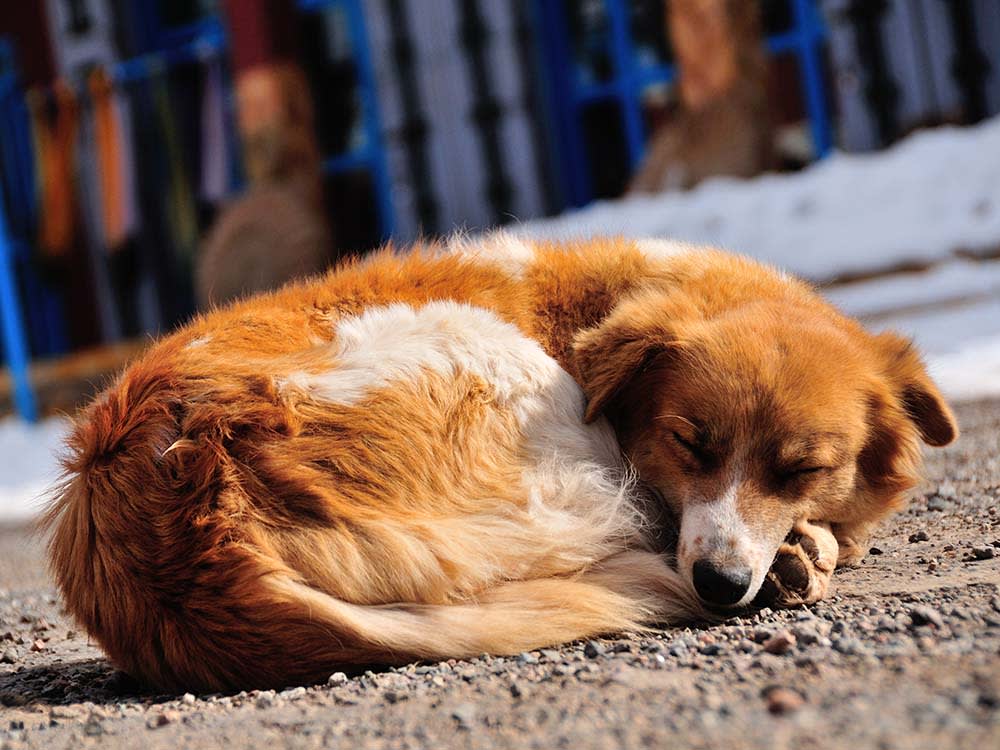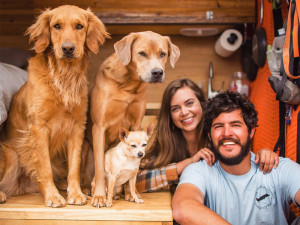Four Things to Do If You Want to Adopt a Dog From Another Country
Fall in love abroad? Follow these simple steps to bring your new family member home.

Share Article
Traveling abroad is full of adventure. And sometimes that includes falling in love with a local — dog, that is. Maybe you met the pup of your dreams while walking on the beach or getting lost among cobblestone streets. Whatever the scenario, it can be easy to bond with a dog while on vacation and be tempted to take them home with you.
The good news is, you can — as long as you’re aware of the process and any possible restrictions. Below is everything you need to know about adopting a dog from another country.

Save on the litter with color-changing tech that helps you better care for your cat.
1. Work with a reputable animal shelter or rescue.
Whether you find your dog as a stray or in a shelter while abroad, it’s important to work with a trustworthy animal shelter or rescue. A reputable animal welfare group will take care of most of the heavy lifting for you — like spay and neuter surgeries, immunization shots, and checking for parasites and diseases. Make sure you check their reviews, inquire with local friends or travel agents, and do your due diligence.
The rescue will ensure you follow all the regulations required, but it’s a good idea to review the complete rules and requirements from the CDCopens in new tab, the USDAopens in new tab, and any additional state guidelinesopens in new tab for importing dogs from other countries. Typically, all that is required is a healthy-looking dog, a valid rabies vaccination certificate, and a certificate of health from a veterinarian indicating the dog is in good shape to travel. The cost for adopting a dog overseas varies widely; expect the adoption fee to be up to $400, depending on the organization.
2. Arrange transportation for your dog.
The animal shelter will work with you to bring your dog home. If there’s enough time — and you’re flying an animal-friendly airline — you might be able to take the dog with you on your flight home. Be sure to inquire about the timing of the certification so you can determine if this might be feasible.
If you’re transporting the dog yourself, be aware of all the rules and regulations of your airline for dog travel. Make sure you have an approved airline carrier and all the paperwork squared away before the flight. Visit the airline’s website or contact their customer service to determine any additional requirements for overseas travel. To limit stress on your dog, try to get a direct flight.
If you can’t transport the dog yourself, the rescue group will find a volunteer to travel with your dog. The flight volunteer is typically a vacationer who is returning home to an area not far from you. The cost for transporting your dog will vary but expect the airline, carrier, and general transportation fees to range from $400 to $1,000 depending on the size of your dog, the airline, and the destination.
On the day of the flight, your dog will either travel under your seat in an airline-approved carrier or will make the trip in the pet area of the cargo hold. Dogs are not sedated during the flight, but most dogs will just sleep through it. If your dog is traveling with a flight volunteer, you’ll need to meet them at the airport, which could be far away.
3. Bring your new dog to the vet.
Even though your dog will arrive with their rabies vaccines and spayed, you should schedule an appointment with your regular vet within a few days of arrival. Your vet will perform a full physical examination, checking for heartworm, parasites, tick-borne diseases, and injuries. They’ll also provide you with any additional vaccination recommendations. Some disorientation is expected in the first few days, but call your vet if your dog displays concerning behavior like refusing food and water or severe lethargy.
4. Make your dog feel at home.
All dogs are different, but don’t be surprised if yours is quiet, shy, or tired when they first arrive. Give your dog a couple of days to acclimate to their new home and soon their personality will shine through. Just as you would with any new dog, make sure they have a comfy bed, a full belly, plenty of exercise, and lots of love.
References:

Daniela Lopez
Daniela Lopez is a digital media specialist and long-time contributor to The Bark.
Related articles
![anonymous woman pampering and taking care about a small ginger kitten]()
6 Ways to Help Local Shelters Without Committing to Full-Time Pet Parenthood
Learn how you can be there for animals in need this National Pet Day.
![dog and cat snuggling together]()
Animal House: How to Intro a New Dog to Your Other Pets
...Without turning your home into a circus.
![Sealyham Terrier and golden retriever playing in the grass]()
Should You Get a Second Dog?
A few things to consider before expanding your fam by four more paws.
![A woman staring at her computer while holding her dog close.]()
10 Things to Consider Before Adopting a Pet
It’s a big decision, so check these boxes before you sign on the dotted line.
![a dog in a crate being carried onto a plane by volunteers]()
Want to Help a Rescue Pet Get to Their New Home? Become a Transport Volunteer
Domestic and international transport volunteers are in high demand—here’s how you can become one.
![Henry and Finn family portrait]()
Keeping Finn’s Henry Friedman Calls From the Road to Talk Van Life & Dog Rescue
“I do enjoy this nomadic lifestyle, but we don’t just go to Mexico to enjoy the beaches. We’re there to help dogs, make donations, make a difference — which, for me, adds a lot more meaning to traveling around in a van.”







